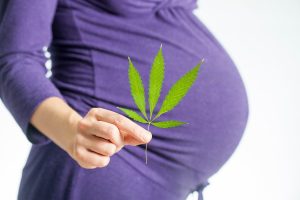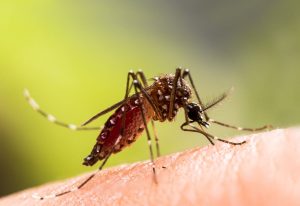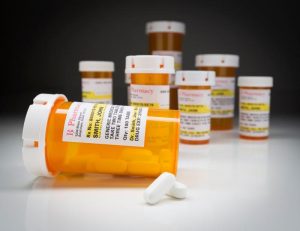From their first smile to their first step to the first day of school, children go through a remarkable transformation on their way to adulthood.
Here, experts explore the five developmental stages, from infancy to adulthood, and take a deeper look at the developmental milestones acquired along the way. Understanding each stage’s developmental milestones can help create an environment that supports their growth.
Child development stages
Child development refers to how a child grows and changes over time.
The Cleveland Clinic defines the five developmental stages:
- Birth to 18 months: Newborn through infancy
- 18 months to 3 years: Toddlers
- 3 to 5 years: Preschool
- 6 to 12 years: School age
- 13 to 18 years: Adolescence
Developmental milestones are defined in four distinct areas: physical, cognitive, language and social-emotional development.
The Cleveland Clinic defines these four areas as follows:
- Physical development refers to their strength and physical skills
- Cognitive development refers to their thinking and problem-solving ability
- Language development refers to their ability to communicate and understand
- Social-emotional development refers to how children interact with others and process feelings
Child development milestones
No two children are alike, and they will develop at their own pace. If you are concerned that your child isn’t reaching important milestones, contacting your pediatrician or an early intervention specialist is appropriate.
In a recent StatPearls article on developmental milestones, experts noted the importance of referrals for any developmental concerns: “Referral to early intervention programs as early as possible is valuable to ensure more positive outcomes. These programs not only provide complete evaluations but connect families with the services required, provide them with service coordinators and social workers that can assist families with issues such as transportation, home visits, counseling, insurance.”
According to the U.S. Centers for Disease Control and Prevention, the following are appropriate milestones.
Birth to 18 months
This is a time of rapid growth and change for a child. From smiling to rolling over to cooing and babbling, they change daily. Developmental milestones typically met by 18 months include:
- Physical: Walking without holding on to anyone, scribbling, feeding themselves, trying to use a spoon and climbing on or off a couch or chair unassisted.
- Cognitive: Copies doing chores, like sweeping with a broom and playing with toys in simple ways, like pushing a car.
- Language: Says three or more words besides mama or dada and follows one-step directions.
- Social/emotional: Moves away but keeps you close by, puts hands out to wash them, points to show you something interesting, looks at a few pages in a book, helps you dress him or her by pushing an arm through a sleeve or lifting up a foot.
18 months to 3 years
So many changes occur during these formative years. They can dress themselves, walk up stairs and begin a conversation. Developmental milestones typically met by 3 years of age include:
- Physical: Fine motor skills begin to develop, and they can string items together like macaroni, put on their clothes, use a fork, able to twist and turn knobs, jump off the ground with both feet and turn pages in a book one at a time.
- Cognitive: Able to draw a circle when shown how, avoids touching hot objects when warned, uses things for pretend, follows two-step instructions, knows at least one color.
- Language: Asks who, what, where or why questions; can identify actions in a book; says first name. Speaks well enough for others to understand.
- Social/emotional: Joins other children for play, settles down within 10 minutes after being left (for instance, at child care).
3 to 5 years
By the age of 5, they can begin to hold a conversation. Other milestones include:
- Physical: Can catch a ball, pour water, use buttons, hold a crayon between forefinger and thumb, hops on one foot.
- Cognitive: Names a few colors of items, draws a person with three body parts, tells what is next in a story, counts to 10, understands words about time, writes some letters in their name, names some letters.
- Language: Says a sentence with four or more words, talks about what happened during their day, tells a story with two events and recognizes simple rhymes.
- Social/emotional: Pretends to be something else during play, offers comfort, likes to be a helper, follows the rules, does simple chores and sings for you.
6 to 12 years
Children’s Hospital of Orange County (CHOC) details some developmental milestones for school-age children. Friendships and activities become central to their development at this time. Other milestones include:
- Physical: Jumping rope, riding a bike and tying shoelaces are skills mastered during these years, along with writing, drawing and painting. Puberty begins for girls between 8 and 13 and for boys between 10 and 16.
- Cognitive: Likes to play board games, understands numbers and fractions, knows the days of the week and can read and write.
- Language: Enjoys talking to others along with reading and writing stories.
- Social/emotional: Cooperation and sharing are learned, along with modesty, and the value of friendships.
13-18 years
CHOC describes adolescence, where puberty occurs along with social and emotional growth, and these milestones:
- Physical: Girls will develop breasts and body hair and begin their periods. Boys will develop body hair, their voices will deepen, and their testes and penis will mature.
- Cognitive: Able to think abstractly, set goals, think long-term and compare themselves to their peers.
- Language: Can grasp meanings and context and form complex sentences. Teens become less literal and more figurative with their expression.
- Social/emotional: Romantic/sexual relationships become essential, develop independence from their parents, and peer influence becomes important.
Source: HealthDay
Copyright © 2024 HealthDay. All rights reserved.

-300x200.jpeg)









-300x241.jpeg)




